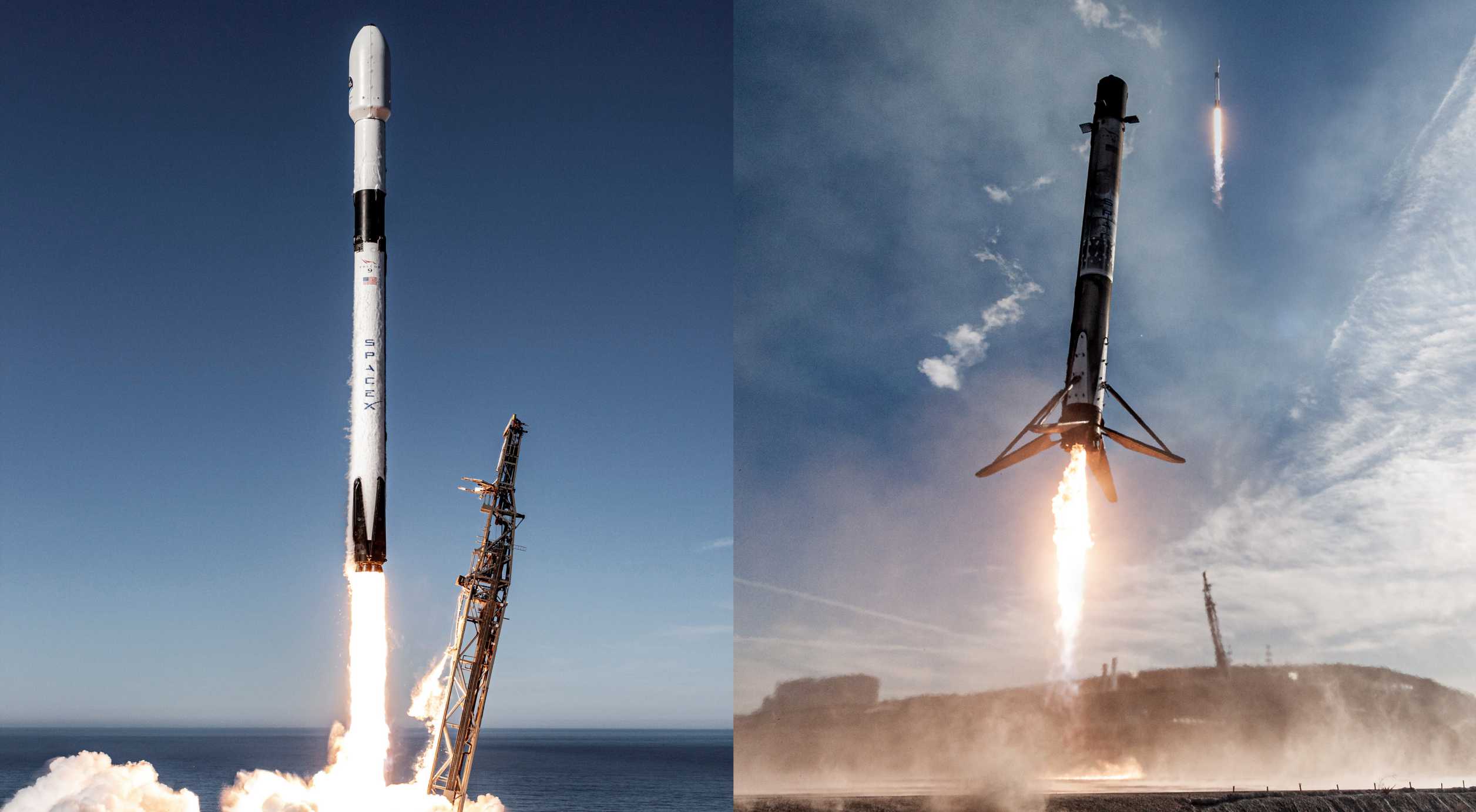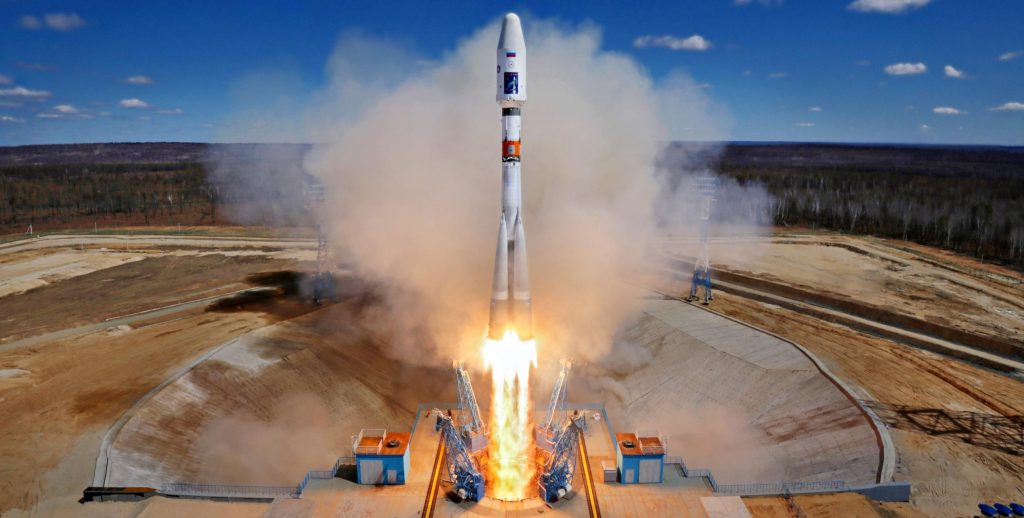

News
SpaceX Falcon 9 rocket to launch spy satellites from California next month
The US National Reconnaissance Office (NRO) says that SpaceX’s first West Coast launch of 2022 is scheduled no earlier than (NET) 8:37 am PST (16:37 UTC), February 2nd.
Surprisingly, the announcement is identical to a launch target that the US Space Systems Command (SSC) put forth as far back as September 7th, 2021, meaning that the NRO’s NROL-87 mission hasn’t slipped a single day in more than four months. On the same list of upcoming military launches, Falcon Heavy’s USSF-44 mission was targeted for October 9th – now NET March 2022 due to payload issues – and Atlas V’s STP-3 launch – planned for November 22nd – actually launched on December 7th. It’s not common for a modern US military spacecraft to make it more than a few months without significant delays – let alone no delay at all.
NROL-87 will also continue an unprecedented string of SpaceX launches that began in the last month or two of 2021. Aside from being SpaceX’s first West Coast launch this year, NROL-87 is the sixth Falcon 9 launch scheduled in the first five weeks of 2022. Even more significantly, NROL-87 could be SpaceX’s 11th Falcon 9 launch in two months or its 14th launch in three months.
In other words, SpaceX is on track to demonstrate the ability to launch anywhere from 56 to 66 times annually by actually sustaining that cadence for two or even three months in a row. In July 2020, SpaceX completed a new environmental assessment of its two East Coast launch pads with the FAA, revealing plans and permission for as many as 64 Falcon launches per year in 2022 and up to 70 from 2023 onward. However, it’s one thing to claim or plan for 60-70 launches per year but another thing entirely to actually demonstrate the ability to achieve those numbers over multiple months.
Prior to 2021, the most SpaceX had ever launched in a two-month period was eight times at the end of 2020. In 2021, SpaceX managed to launch 20 times in just the first half of the year – demonstrating an annual cadence of 40 launches per year if repeated in H2 2021. However, Starlink satellite production ran into major hurdles as SpaceX grappled with semiconductor shortages and attempted to move from V1.0 to a new V1.5 design. As a result, SpaceX only launched three times in Q3 and skipped July and October entirely.
However, Starlink production appeared to recover in Q4 and SpaceX managed to launch another eight times in the last two months of 2021. More importantly, SpaceX actually launched five times in December 2021 and six times between November 24th and December 21st – less than four weeks. Heading into 2022, SpaceX has shown no signs of slowing down. On January 4th, a statement from the US Space Force implied that SpaceX was aiming for five Falcon 9 launches in the first month of 2022. Two weeks later, SpaceX has completed three Falcon 9 launches and has two more scheduled on January 27th and 29th. NROL-87 will kick off February on the 2nd and, barring delays, could be SpaceX’s 11th launch since December 2nd.

Unofficial manifests suggest that SpaceX has as many as 40 commercial launches tentatively scheduled in 2022, one of which has been completed. In H1 2021, SpaceX further demonstrated the ability to build and launch approximately 1800 Starlink satellites (30 launches worth) in a single year. Of course, issues can and will arise and delays are the norm in spaceflight, so there’s a good chance SpaceX will have slow months where customer and Starlink missions both run into delays. Nonetheless, all evidence currently available suggests that SpaceX could smash its annual launch record (31 in 2021) with anywhere from 40 to 60+ launches in 2022.

Elon Musk
Elon Musk and Tesla AI Director share insights after empty driver seat Robotaxi rides
The executives’ unoccupied tests hint at the rapid progress of Tesla’s unsupervised Robotaxi efforts.

Tesla CEO Elon Musk and AI Director Ashok Elluswamy celebrated Christmas Eve by sharing personal experiences with Robotaxi vehicles that had no safety monitor or occupant in the driver’s seat. Musk described the system’s “perfect driving” around Austin, while Elluswamy posted video from the back seat, calling it “an amazing experience.”
The executives’ unoccupied tests hint at the rapid progress of Tesla’s unsupervised Robotaxi efforts.
Elon and Ashok’s firsthand Robotaxi insights
Prior to Musk and the Tesla AI Director’s posts, sightings of unmanned Teslas navigating public roads were widely shared on social media. One such vehicle was spotted in Austin, Texas, which Elon Musk acknowleged by stating that “Testing is underway with no occupants in the car.”
Based on his Christmas Eve post, Musk seemed to have tested an unmanned Tesla himself. “A Tesla with no safety monitor in the car and me sitting in the passenger seat took me all around Austin on Sunday with perfect driving,” Musk wrote in his post.
Elluswamy responded with a 2-minute video showing himself in the rear of an unmanned Tesla. The video featured the vehicle’s empty front seats, as well as its smooth handling through real-world traffic. He captioned his video with the words, “It’s an amazing experience!”
Towards Unsupervised operations
During an xAI Hackathon earlier this month, Elon Musk mentioned that Tesla owed be removing Safety Monitors from its Robotaxis in Austin in just three weeks. “Unsupervised is pretty much solved at this point. So there will be Tesla Robotaxis operating in Austin with no one in them. Not even anyone in the passenger seat in about three weeks,” he said. Musk echoed similar estimates at the 2025 Annual Shareholder Meeting and the Q3 2025 earnings call.
Considering the insights that were posted Musk and Elluswamy, it does appear that Tesla is working hard towards operating its Robotaxis with no safety monitors. This is quite impressive considering that the service was launched just earlier this year.
Elon Musk
Starlink passes 9 million active customers just weeks after hitting 8 million
The milestone highlights the accelerating growth of Starlink, which has now been adding over 20,000 new users per day.

SpaceX’s Starlink satellite internet service has continued its rapid global expansion, surpassing 9 million active customers just weeks after crossing the 8 million mark.
The milestone highlights the accelerating growth of Starlink, which has now been adding over 20,000 new users per day.
9 million customers
In a post on X, SpaceX stated that Starlink now serves over 9 million active users across 155 countries, territories, and markets. The company reached 8 million customers in early November, meaning it added roughly 1 million subscribers in under seven weeks, or about 21,275 new users on average per day.
“Starlink is connecting more than 9M active customers with high-speed internet across 155 countries, territories, and many other markets,” Starlink wrote in a post on its official X account. SpaceX President Gwynne Shotwell also celebrated the milestone on X. “A huge thank you to all of our customers and congrats to the Starlink team for such an incredible product,” she wrote.
That growth rate reflects both rising demand for broadband in underserved regions and Starlink’s expanding satellite constellation, which now includes more than 9,000 low-Earth-orbit satellites designed to deliver high-speed, low-latency internet worldwide.
Starlink’s momentum
Starlink’s momentum has been building up. SpaceX reported 4.6 million Starlink customers in December 2024, followed by 7 million by August 2025, and 8 million customers in November. Independent data also suggests Starlink usage is rising sharply, with Cloudflare reporting that global web traffic from Starlink users more than doubled in 2025, as noted in an Insider report.
Starlink’s momentum is increasingly tied to SpaceX’s broader financial outlook. Elon Musk has said the satellite network is “by far” the company’s largest revenue driver, and reports suggest SpaceX may be positioning itself for an initial public offering as soon as next year, with valuations estimated as high as $1.5 trillion. Musk has also suggested in the past that Starlink could have its own IPO in the future.
News
NVIDIA Director of Robotics: Tesla FSD v14 is the first AI to pass the “Physical Turing Test”
After testing FSD v14, Fan stated that his experience with FSD felt magical at first, but it soon started to feel like a routine.

NVIDIA Director of Robotics Jim Fan has praised Tesla’s Full Self-Driving (Supervised) v14 as the first AI to pass what he described as a “Physical Turing Test.”
After testing FSD v14, Fan stated that his experience with FSD felt magical at first, but it soon started to feel like a routine. And just like smartphones today, removing it now would “actively hurt.”
Jim Fan’s hands-on FSD v14 impressions
Fan, a leading researcher in embodied AI who is currently solving Physical AI at NVIDIA and spearheading the company’s Project GR00T initiative, noted that he actually was late to the Tesla game. He was, however, one of the first to try out FSD v14.
“I was very late to own a Tesla but among the earliest to try out FSD v14. It’s perhaps the first time I experience an AI that passes the Physical Turing Test: after a long day at work, you press a button, lay back, and couldn’t tell if a neural net or a human drove you home,” Fan wrote in a post on X.
Fan added: “Despite knowing exactly how robot learning works, I still find it magical watching the steering wheel turn by itself. First it feels surreal, next it becomes routine. Then, like the smartphone, taking it away actively hurts. This is how humanity gets rewired and glued to god-like technologies.”
The Physical Turing Test
The original Turing Test was conceived by Alan Turing in 1950, and it was aimed at determining if a machine could exhibit behavior that is equivalent to or indistinguishable from a human. By focusing on text-based conversations, the original Turing Test set a high bar for natural language processing and machine learning.
This test has been passed by today’s large language models. However, the capability to converse in a humanlike manner is a completely different challenge from performing real-world problem-solving or physical interactions. Thus, Fan introduced the Physical Turing Test, which challenges AI systems to demonstrate intelligence through physical actions.
Based on Fan’s comments, Tesla has demonstrated these intelligent physical actions with FSD v14. Elon Musk agreed with the NVIDIA executive, stating in a post on X that with FSD v14, “you can sense the sentience maturing.” Musk also praised Tesla AI, calling it the best “real-world AI” today.








